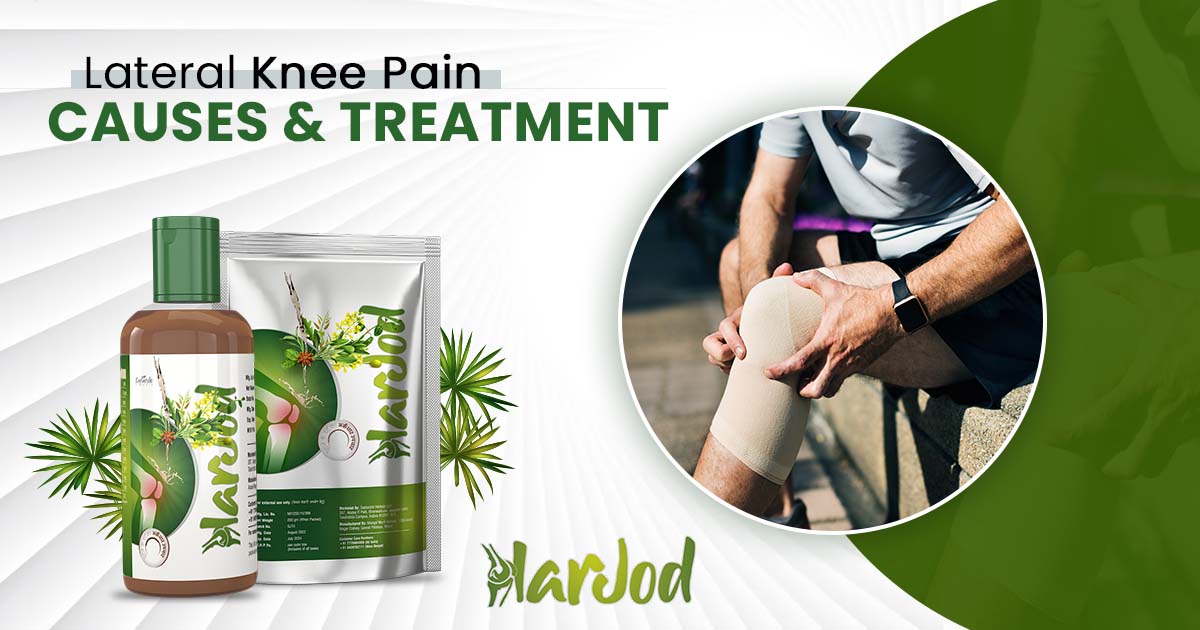Lateral knee pain can have various causes, and it's important to identify the underlying issue for effective treatment. In Ayurveda, the approach to treating lateral knee pain involves balancing the doshas (Vata, Pitta, and Kapha), improving digestion, and addressing any specific issues related to the knee joint.
Causes of Lateral Knee Pain:
Vata Imbalance:
Ayurveda often attributes joint pain to an imbalance in the Vata dosha. This imbalance can lead to dryness, stiffness, and pain in the joints.
Inflammation (Pitta Imbalance):
Pitta imbalance may contribute to inflammation, which can affect the knee joint and cause pain.
Overuse or Injury:
Overuse of the knee joint or direct injury can result in pain on the lateral side.
Integration of Ayurveda with Modern Methods
Combining Ayurveda with modern medical approaches is known as integrative or complementary medicine. This approach aims to take advantage of both systems to provide a more comprehensive and effective healthcare strategy.
Here's how Ayurveda and modern methods can be integrated:
Personalized Treatment Plans:
Ayurveda modifies treatments based on an individual's constitution (Prakriti) and imbalances (Vikriti).
Nutrition and Lifestyle:
Ayurveda places significant emphasis on diet and lifestyle. Combining Ayurvedic dietary recommendations with modern nutritional science can optimize nutritional support for various health conditions.
Mind-Body Practices:
Ayurveda includes practices like yoga and meditation. Integrating these mind-body techniques with modern stress management approaches can enhance mental well-being and overall health.
Pain Management:
Ayurveda offers natural pain-relieving methods, such as herbal formulations and specific therapies. Adding these to modern pain management strategies can provide a more comprehensive and balanced approach.
Chronic Disease Management:
Integrating Ayurveda into the management of chronic diseases can focus on prevention and addressing underlying imbalances. This collaborative approach may enhance the overall effectiveness of treatment.
Preventive Healthcare:
Ayurveda has a strong focus on preventive healthcare. Integrating Ayurvedic principles into lifestyle modifications for preventive care can complement modern preventive measures.
Herbal Medicine:
Ayurvedic herbs with proven benefits can complement modern pharmaceuticals. However, it's crucial to ensure there are no interactions or contraindications between Ayurvedic herbs and prescribed medications.
Massage
Massage can be a complementary approach to managing lateral knee pain, and the use of specific Ayurvedic massage oils may provide additional benefits. When choosing a massage oil for lateral knee pain, it's essential to consider ingredients with anti-inflammatory and pain-relieving properties.
Massage oil is applied onto the lateral side of the knee using gentle, circular motions. Attention is paid to the surrounding muscles and joints.
In the context of massage oils, an Ayurveda-inspired blend of herbs may offer relief when used as per Ayurvedic guidelines. Here, we suggest Harjod Join Pain Massage Oil. It is a balanced mix of herbs such as Vanshlochan, Ashwagandha, Dhak, Vidhara, Piplamool, and many more effective ingredients that not only help in relieving pain but also aid in strengthening muscles and bony structures.
In conclusion, combining Ayurvedic principles with modern health education can empower individuals to actively participate in their well-being. Integrating Ayurveda with modern medicine can provide a comprehensive strategy for addressing the root causes and symptoms of knee pain.






